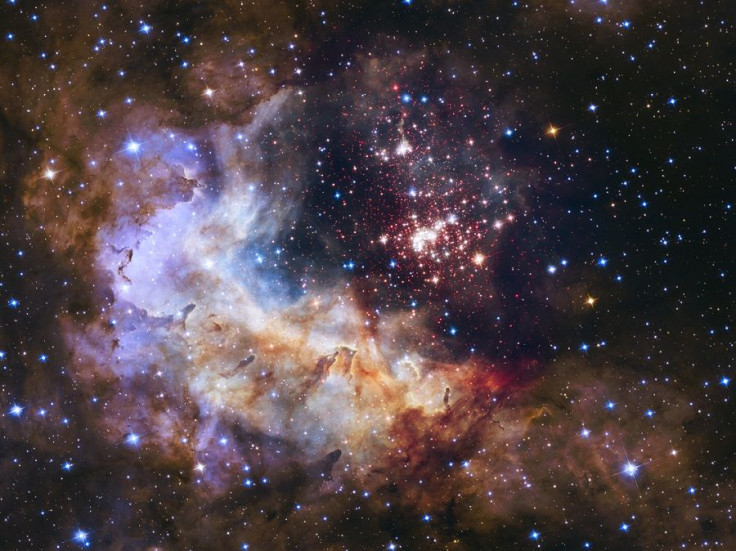Hubble Study Discovers Why Some Stars Find It Easier To Form Planets

KEY POINTS
- Researchers studied Westerlund 2, a giant star cluster with massive stars at its center
- The stars closer to the center of the cluster did not have the planet-forming disks
- The massive stars at the center of the cluster are possibly altering the disks of nearby stars
After three years of Hubble study, researchers may have found why some stars in Westerlund 2, a giant cluster of stars in the constellation Carina, have an easier time forming planets than others.
Westerlund 2 is about 20,000 lightyears away from the Earth, and is an extremely dense star formation that, thanks to the Hubble Space Telescope, researchers can study in regard to planet formation.
A team of researchers conducted a three-year Hubble study of Westerlund 2 to see why some of the stars in the formation seem to find it easier to form planets than others. In the end, it all came down to a specific factor: location. The study was published in The Astrophysical Journal.
Using data from Hubble's Wide Field Camera 3, the researchers observed 1,500 of the nearly 5,000 stars in Westerlund 2 with masses from 0.1 to 5 times the mass of the Sun were fluctuating in brightness, likely as a result of clumped orbiting material within their disks temporarily blocking the light.
Eventually, these clumps in the disk could turn into planets.
However, these fluctuations were only observed in the region outside of the cluster's central region. Within four lightyears from the cluster's core, the researchers did not observe the same fluctuations, suggesting the disks around stars did not have the same clumped orbiting material that can eventually turn into planets.
It so happens there are at least 30 extremely massive stars that can weigh up to 80 times the mass of the Sun at the cluster's core. According to the researchers, it is possible the massive stars' ultraviolet radiation and powerful stellar winds alter the disks around the nearby, lower mass stars, thereby changing their capability to form surrounding planets.
"Basically, if you have monster stars, their energy is going to alter the properties of the disks around nearby, less massive stars," lead researcher Elena Sabbi of the Space Telescope Science Institute in Baltimore said in a NASA feature. "You may still have a disk, but the stars change the composition of the dust in the disks, so it's harder to create stable structures that will eventually lead to planets. We think the dust either evaporates away in 1 million years, or it changes in composition and size so dramatically that planets don't have the building blocks to form."
Simply put, the stars at the cluster's central region have a more difficult time forming planets because of their proximity to extremely massive stars that tend to alter their planet-formation capabilities.
"Hubble's observations of Westerlund 2 give us a much better sense of how stars of different masses change over time, and how powerful winds and radiation from very massive stars affect nearby lower-mass stars and their disks," Sabbi said. "This information is important for building models of planet formation and stellar evolution."
According to the NASA feature, the observations marked the first time astronomers studied a star cluster to determine the environments that are favorable to planet formation. As such, Westerlund 2 will be an excellent candidate for follow-up observations using the upcoming James Webb Space Telescope as well as the Nancy Grace Roman Space Telescope, which was named after the "Mother of Hubble."
© Copyright IBTimes 2024. All rights reserved.






















